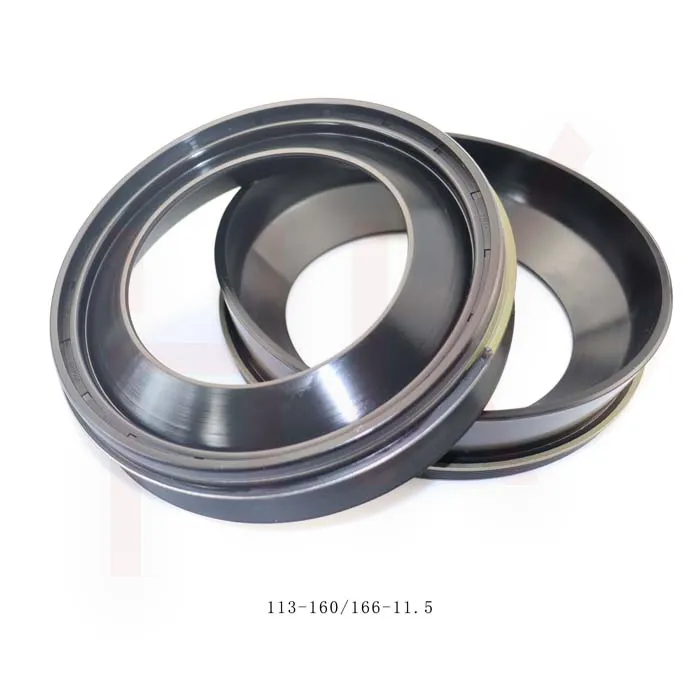Nov . 05, 2024 10:48 Back to list
hydraulic motor seals
Understanding Hydraulic Motor Seals Importance, Types, and Maintenance
Hydraulic motors are crucial components in various industrial applications, providing the power needed to move machinery and equipment. One of the essential elements that ensure these motors operate efficiently and reliably are hydraulic motor seals. This article delves into the significance of hydraulic motor seals, the various types available, and tips for their maintenance to ensure optimal performance and longevity.
The Significance of Hydraulic Motor Seals
Hydraulic motor seals play a vital role in the overall performance and reliability of hydraulic systems. They are designed to prevent fluid leakage, which can lead to efficiency losses, increased operational costs, and potential damage to the hydraulic system itself. Moreover, effective sealing ensures that contaminants, such as dust and dirt, do not enter the hydraulic fluid, which can compromise the integrity of the system and contribute to premature wear and tear.
By maintaining a proper seal, these components help in maintaining pressure within the hydraulic system, which is necessary for the efficient transfer of power. In essence, hydraulic motor seals are pivotal in achieving reliable operation, reducing maintenance costs, and enhancing the lifespan of hydraulic motors.
Types of Hydraulic Motor Seals
There are several types of seals used in hydraulic motors, each designed to address specific needs and operating conditions
1. O-rings O-rings are one of the most common types of seals used in hydraulic applications. They are circular in shape and can be made from various materials such as nitrile, fluorocarbon, or silicone. O-rings are versatile and can effectively seal the joint between different components, preventing fluid leaks.
2. U-cups U-cups are designed to provide a sealing surface for high-pressure applications. Their unique shape allows them to fit snugly against the cylinder wall, providing excellent sealing performance while permitting some degree of axial movement.
3. V-rings V-rings are another popular sealing solution in hydraulic systems. They are typically used in applications where there is potential for dirt or contamination ingress. The design of V-rings allows them to effectively repel dirt while sealing against the rotating shaft.
4. Backup rings Often used in conjunction with other seals, backup rings help prevent extrusion and improve overall seal performance. They are typically made of harder materials than the primary seals and are placed behind O-rings or U-cups to provide additional support under high-pressure conditions.
hydraulic motor seals

5. Lip seals Lip seals comprise a flexible sealing lip that makes contact with the shaft or housing. Designed for high-speed applications, they offer excellent performance against fluid leakage and are commonly used in rotary applications.
Maintenance Tips for Hydraulic Motor Seals
To ensure that hydraulic motor seals function effectively throughout their life cycle, proper maintenance is essential. Here are some practical maintenance tips
1. Regular inspections Periodically check the hydraulic motors for signs of leakage or wear on the seals. Any signs of fluid accumulation around the seals may indicate failure or degradation that needs immediate attention.
2. Maintain fluid cleanliness Keeping hydraulic fluid free from contaminants is crucial for the longevity of seals. Utilize filters and regularly change hydraulic fluid as part of your maintenance routine to minimize contamination.
3. Monitor operating conditions Understanding the temperature and pressure ranges of your hydraulic system helps in selecting the right seals. Excessive heat or pressure can lead to premature failure of seals, so it's vital to adhere to recommended operating conditions.
4. Proper installation Ensure that seals are installed correctly according to manufacturer specifications. Improper installation can lead to seal damage and premature failure.
5. Use compatible materials Different seal materials offer varying resistance to temperature, pressure, and fluid types. Always choose seal materials that are compatible with the hydraulic fluid used in your system.
Conclusion
Hydraulic motor seals are integral to the efficient operation of hydraulic systems. Understanding their importance, types, and maintenance can significantly enhance the performance and reliability of hydraulic motors. By investing time in ensuring the integrity of these seals, you can prevent costly repairs, minimize downtime, and extend the life of your hydraulic equipment. Proper maintenance and vigilance in seal performance can lead to a smoother, more efficient industrial operation.
-
Reliable Oil Seal Wheel Hub Solutions for Industrial & Automotive Use
NewsNov.17,2025
-
Durable Front Hub Oil Solutions for Industry – HKAiSeal
NewsNov.17,2025
-
Wholesale Hydraulic Pump Motor Seal Kit A4VSO250 | In Stock
NewsNov.17,2025
-
Pump Seal Kits: Essential Components for Industrial Reliability
NewsNov.17,2025
-
TCV Oil Seal - Double-Lip, Spring-Loaded, High Temp & Wear
NewsNov.17,2025
-
Hydraulic Seal Kits: Reliable Solutions for Industrial Equipment
NewsNov.17,2025
-
Combined oil seal 659214 12001903B, fits 119990, NBR OEM
NewsNov.17,2025
Products categories
















